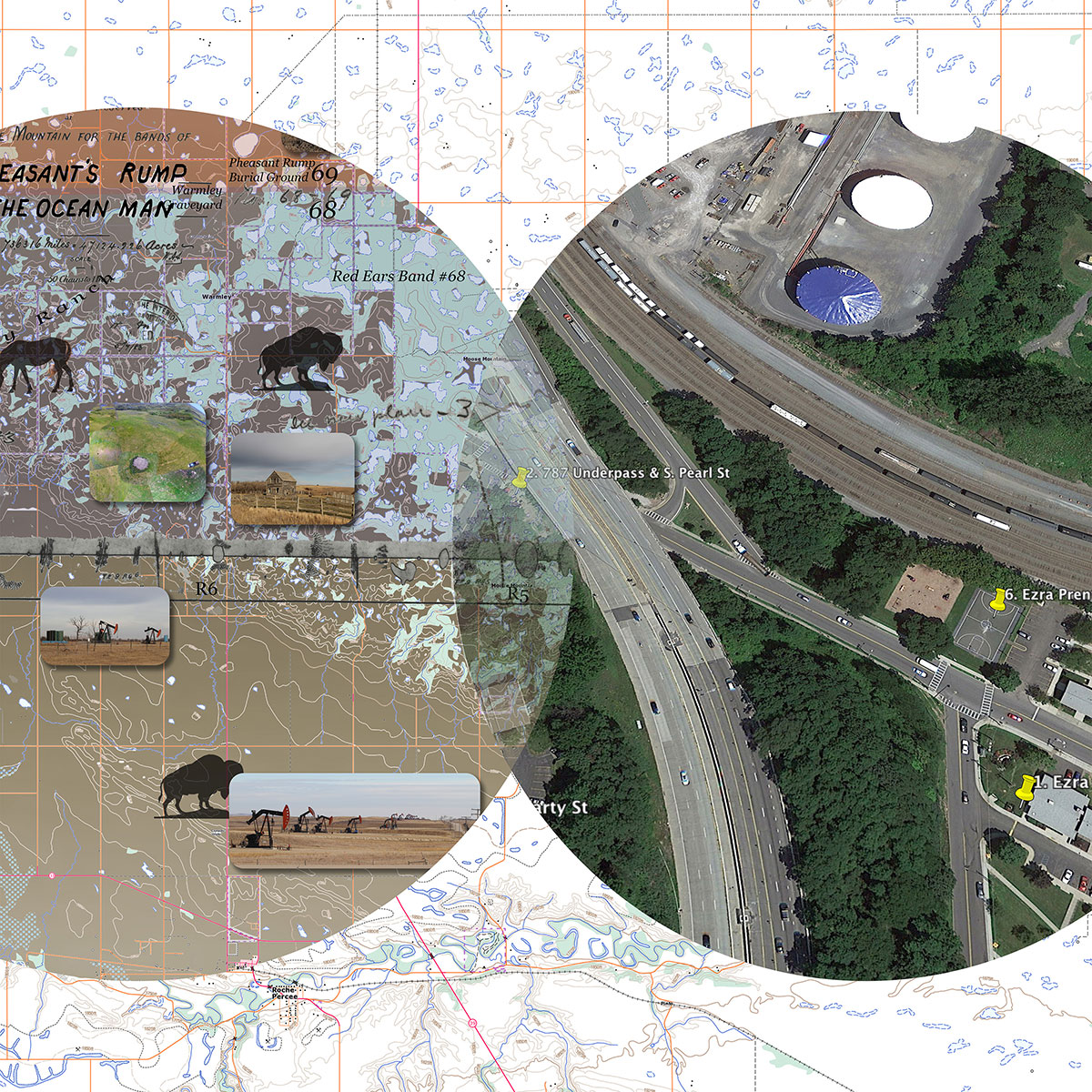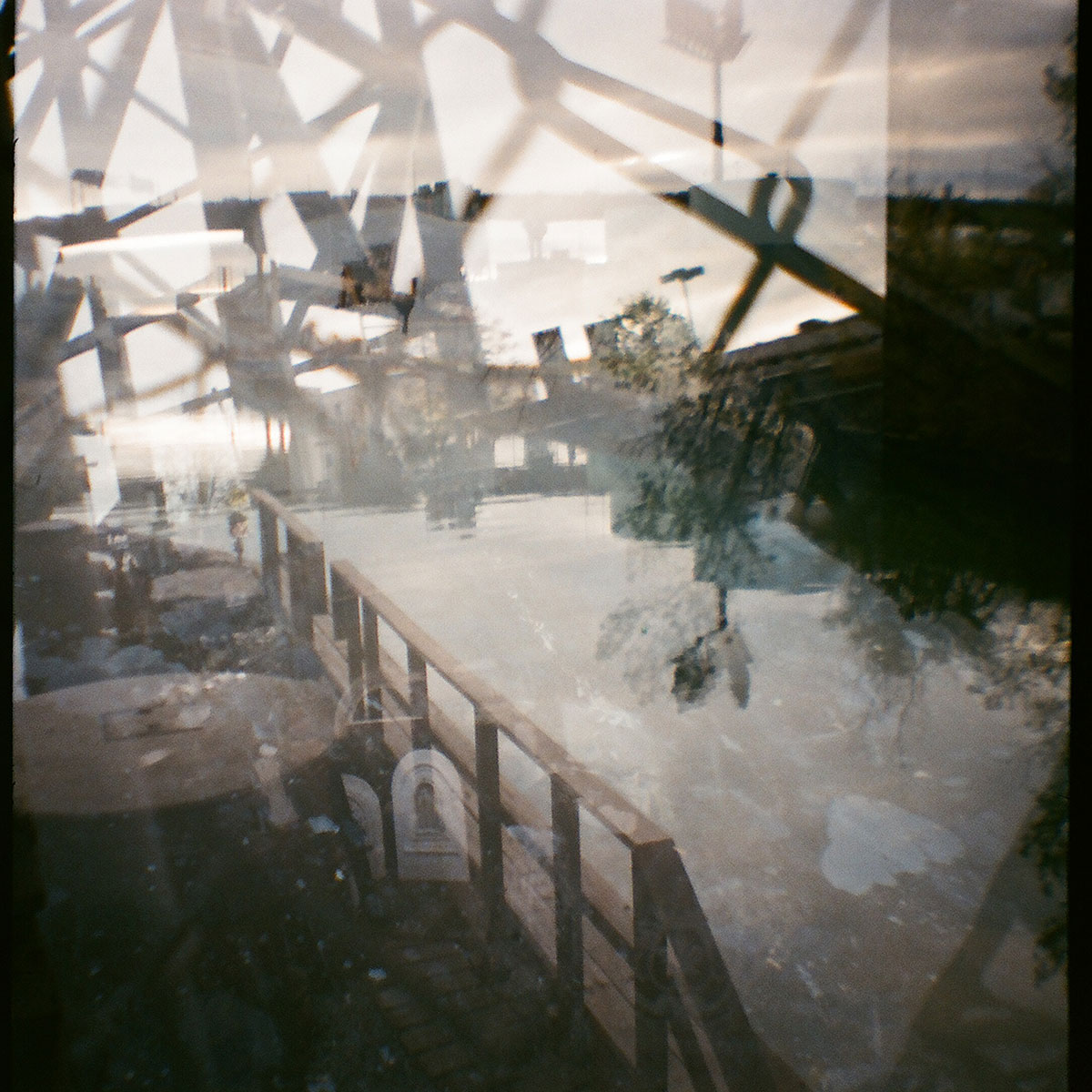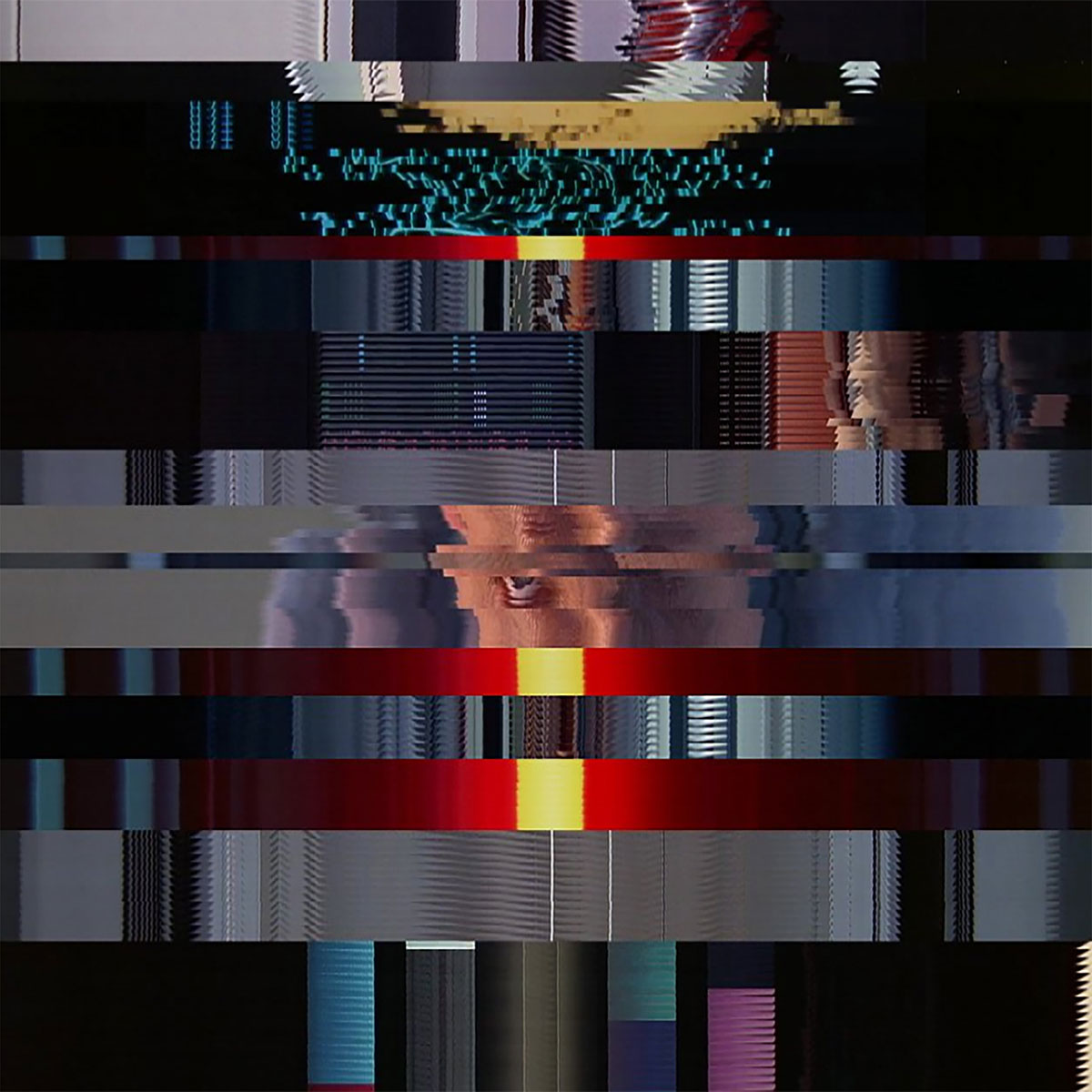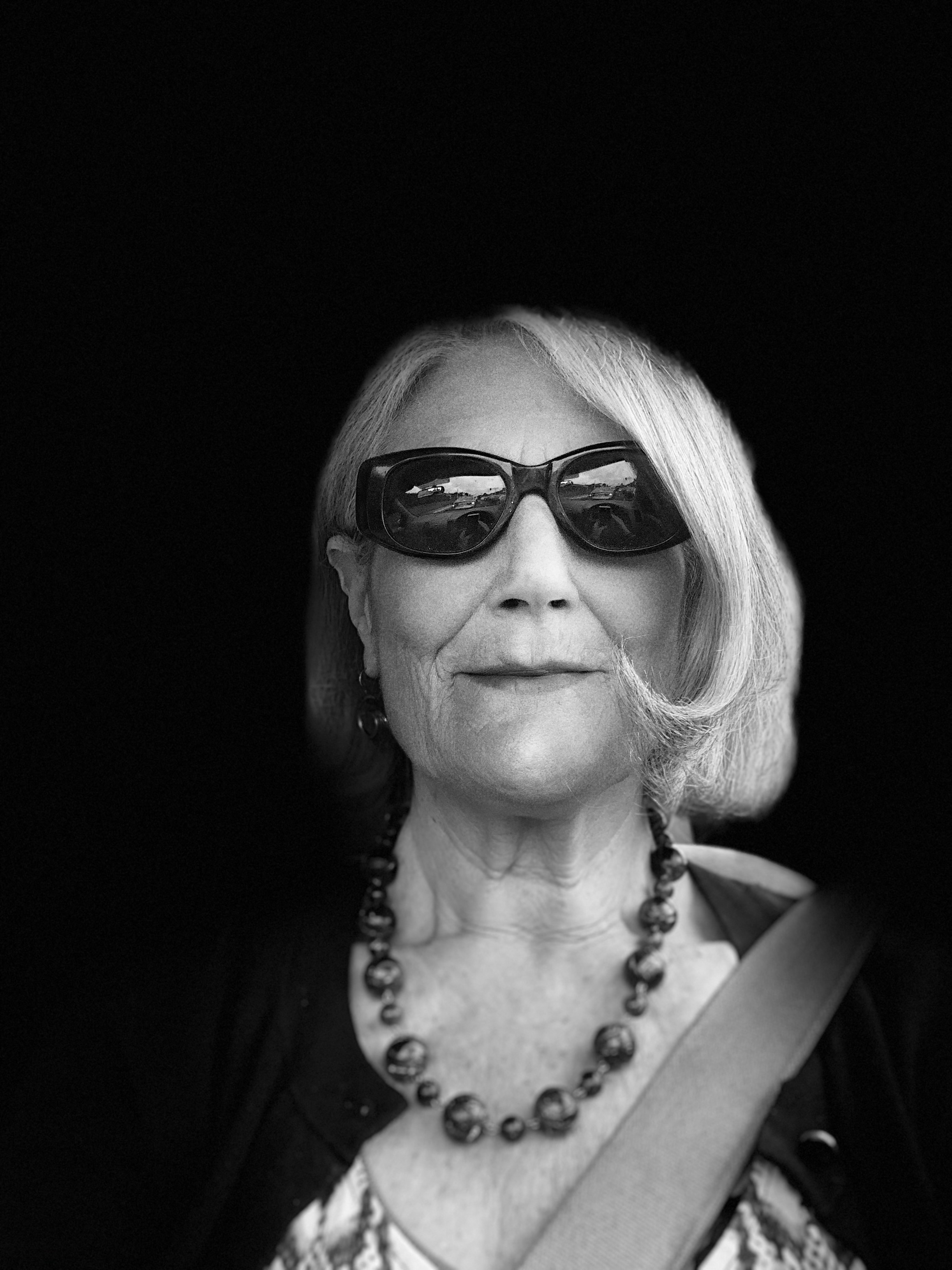
A compulsion to venture beyond the realms in which members usually operate is the impulse behind the Society for Literature, Science and the Arts (SLSA). The group’s innovation-focused academics and independent scholars, researchers, and artists will hold their 33rd-annual meeting at UC Irvine, where their interdisciplinary inquiries will unfold in multitudinous panels and presentations under the theme of Experimental Engagements.
Co-organizing the event are UCI art professors Antoinette LaFarge and Jesse Colin Jackson, who have devised an exhibition that in itself differs from the usual group art show. Their curating for “At the Margins” was driven in part by the limited space of a photographic gallery in the student center, as well as by a desire to collect creative content from those who don’t ordinarily identify as artists. Their call was aimed at all contingents of the society’s membership, asking for a single image in response to the prompt “What is the location of your Experimental Engagement?”
Submissions had to include a square jpeg image, a caption, a quote and a citation (in Chicago footnote style), all in portrait orientation. About 50 of these poster-shaped snapshots will be on view and open to the public. With apologies to Jackson for using the word poster—“as it signals something nobody wants,” he quipped—I’ve previewed a riveting sample of these nonposters. The images and words capture worlds colliding, where biochemists cite poets and artists quote neuroscientists, from a neuron forest to a future in which we have nostalgia for the sun.

Places depicted veer from Rebecca Cummin’s “deep space of a human cell” to an elegant photo of Gowanus Canal, “beloved neighborhood, EPA Superfund site,” as captured in Heather Parrish’s Atopia, to a glitch “created by capturing horizontal ‘slices’ of still frames at one-second intervals from Stanley’s Kubrick’s 2001: A Space Odyssey (1968)” in Star . . . gate() by Eddie Lohmeyer.
Zeroing in on a locale was a challenge even for LaFarge, whose medium is computers and cyberspace. “I thought about what it might mean to say that these form the location of my engagements. . . . In the end, I decided that for my work, ‘location’ is more metaphysical than physical.”
It’s quite corporeal for The Compost Pile, a lush closeup of decay, for which Aja Rose Bond cites herself: “To compost, I propose, is to enter a liminal space between the living, dead, the non-living and the non-human—here framed as the domain of the witch.” Registered conference-goers can join Bond in a “compost devotional ritual.”

Yulia Gilich’s Settler Innocence corrals the events of May 14, 2018, in a chilling collage of barbed wire, an exultant singer, fleeing Palestinians and selfie-taking non-elected members of the Trump family with Benjamin Netanyahu. That day, Tel Aviv celebrated Israel’s victory in the Eurovision Song Contest, the U.S. moved its embassy to Jerusalem, and 60 Palestinians were killed and 2,700 injured. Gilich quotes Gloria Wekker from her book White Innocence: “The claim of innocence, however, is a double-edged sword: it contains not-knowing, but also not wanting to know.”
RedPenBlackPen scientific-comics artist and computational biologist Jason McDermott’s Map of Manuscript Earth represents the journey of completing a scientific paper: “I love deadlines. I love the whooshing noise they make as they go by.”
Maria Michails’ Cross-Border Interludes depicts a Venn diagram of aerial views of the rural and urban environments impacted by oil extraction where she has generated community art projects. On the complexities of switching to sustainable energy, Michails quotes the Petrocultures Research Group: “We will not make an adequate or democratic transition to a world after oil without first changing how we think, imagine, see, and hear.”

SLSA 2019 is three days of people committed to doing just that.
Plus, in the evenings when the unregistered can partake, food trucks and celebratory receptions will precede gallery viewing at the School of the Arts. Performances include a free concert and talk-back by Teeth & Metals, whose experimental piano and electronics are sure to shake the snowglobe of your brain.
And two inter-media spectacles take the stage: AirLock, by playwright/academic/artistic director of Padua Playwrights Guy Zimmerman and directed by Scarlett Kim, is a “high-tech, high-stakes game of cosmic sabotage,” in which spacewalkers are trapped outside space stations and the airlock that nestles our planet. Reading Frankenstein, a collaboration by three UCI professors (Annie Loui in drama, Jim Fallon in medicine, and LaFarge), debuted in 2003, but it no longer contains cutting-edge technology for its central figure, scientist Mary Shelley. The update shifts to genetic engineering in place of AI.
Meaning both artificial intelligence and ignorance, AI is all over the conference schedule, as is the unfamiliar CRISPr (clustered regularly interspaced short palindromic repeats). Grasping onto palindromes was of no help in comprehending its implications for Reading Frankenstein. “CRISPr is essentially a toolkit that makes editing genes both faster and more precise,” explains LaFarge. “For our piece, we thought about it as a way to greatly speed up evolution and bring into being life forms of kinds that had never yet appeared on Earth—for better or for worse. And CRISPr has appeared at precisely the moment in history that climate change is exerting enormous pressure on life all over Earth—pushing many species that can’t evolve rapidly enough toward extinction.”
All these creative enterprises around life’s ubiquitous reminders of doom have me alternating between states of exultation and depression. So I’ll leap into the experimental labs of Icahn School of Medicine neuroscientist Allison Waters and theater artist/organic farmer Tannis Kowalchuk. Their lecture/performance Out of Mind begins with Waters relating the lab results measuring the actress’ brain in various mood-states as part of her research in developing neurotechnologies to treat depression. But Kowalchuk interrupts on accordion. The explosion of the standard lecture by song, physical action and Shakespeare unleashes the process of discovery and reveals an unconventional relationship between researcher and subject.
While Out of Mind is for registered members of SLSA, I include it not only because these discoverers are longtime friends, but also because their collaboration has evolved over the 21st century; it started with creating original theater, then branched out toward science independently, and recommenced in an inspiring hybrid.
As our world careens toward despotism and demise, it’s comforting to know connections are fortifying across social, scientific and artistic spheres just as the roots of 3,000-year-old coastal redwoods do just below the surface of the ground.
It’s towering tree vs. CRISPr creature in a Big Boss Battle—that’s Paint It Black’s Experimental Engagement.
“At the Margins” at Viewpoint Gallery, UCI Student Center, 311 W. Peltason Dr., Irvine. Nov. 8-16, 7 a.m.-midnight.
Experimental Engagements/SLSA19 at UCI Student Center and at Claire Trevor School of the Arts, 4002 Mesa Rd., Irvine; litsciarts.org/slsa19/special-events/. Nov. 7-9. See website for special events open to the public.

Lisa Black proofreads the dead-tree edition of the Weekly, and writes culture stories for her column Paint It Black.


Do you want to become a Canadian citizen and have a business?
https://arnikavisa.com/canada-investor-visa-learn-about-investment-immigration
Hi, unfortunately, I faced challenges with the slow loading speed of your website, leading to frustration. I recommend a service, linked below, that I’ve used personally to significantly improve my website speed. I really love your website…Optimize now
Beyoğlu’nda Gece Gezintisi İçin Yeni Rota: İstiklal Caddesi.
Beyoğlu’nda Sokak Sanatıyla Renklenen Duvarlar, Sanat Dolu Bir Gezinti İçin Sizi Bekliyor.
Küçükçekmece’de Genç Müzisyenler İçin Yeni Müzik Stüdyoları.